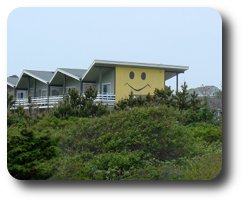Saturday 30 October, 10.30am until 12.00pm, Lecture Theatre 2
 Philosopher Alain de Botton argues that one of the ‘great, but often unmentioned, causes of both happiness and misery is the quality of our environment’. Paul Finch, chair of the Commission for Architecture and the Built Environment, claims there are many examples of ‘built environments that are conducive to developing and encouraging mental health’. The World Health Organisation says that ‘at last there is a new recognition that the health and well-being of people is perhaps the fundamental purpose of planning’.
Philosopher Alain de Botton argues that one of the ‘great, but often unmentioned, causes of both happiness and misery is the quality of our environment’. Paul Finch, chair of the Commission for Architecture and the Built Environment, claims there are many examples of ‘built environments that are conducive to developing and encouraging mental health’. The World Health Organisation says that ‘at last there is a new recognition that the health and well-being of people is perhaps the fundamental purpose of planning’.
The Royal Commission on Environmental Pollution has noted that, ‘the nature of the relationship between health and place is poorly understood’. But that doesn’t stop architectural and urban planning pundits proclaiming that a good built environment can make you happy and healthy. Grand Design presenter Kevin McCloud’s development company is called ‘Happiness Architecture Beauty’. Indeed the RIBA’s think tank, Building Futures, wants to ‘ensure knowledge and understanding of “Happiness Science” is higher on the agenda of Architects and Designers’.
So what is the role of architecture in fostering happiness? Is happiness the end goal of design, or is it a happy coincidence that good architecture cheers us up? If we decide that ‘quality of life’ issues matter more than material development, what effect will this have on urban development? Nick Rosen, author of How to Live Off-Grid argues that ‘two billion (people) worldwide are living without mains power, water or phone (and) many of those people are happy as they are’, so should Africa follow the Western model of urbanisation if it will only make them miserable? Should those designing the built environment try to make us happy, or should architects mind their own business?
Listen to session audio:
 | Alastair Donald associate director, Future Cities Project; architecture programme manager, British Council |
 | Sarah Gaventa director, public space, CABE; co-founder, Scarlet Projects; author, Concrete Design and New Public Spaces |
 | Harry Rich chief executive, Royal Institute of British Architects |
 | Jane Wernick director, Jane Wernick Associates; editor, Building Happiness: architecture to make you smile |
| Chair: | |

|
Austin Williams
associate professor in architecture, XJTLU University, Suzhou, China; director, Future Cities Project; convenor, Bookshop Barnies; founding member of New Narratives |
Samuel Beckett said that the tears of the world are a constant quantity. But what if the tears of the world are not so constant? What if it really is possible for individuals and whole societies to shape and boost their happiness? This simple but extraordinarily powerful idea lies behind the Movement for Happiness that is launched later this year.
Lord Richard Layard, Anthony Seldon, Geoff Mulgan, Movement for Happiness, 2010Cancer care doesn't have to mean grim hospital wards, believes Maggie's co-founder Charles Jencks: uplifting buildings benefit both body and soul. But are they just an architectural placebo?
Steve Rose, Guardian, 7 May 2010'Future health' tells us how good design makes healthy places. It brings what CABE has learned about sustainable, health-promoting environments together with the latest thinking about health and well-being.
Commission for Architecture and Built Enviroment, 18 November 2009
 What makes a house truly beautiful? Why are many new houses so ugly? Why do we argue so bitterly about sofas and pictures; and can differences of taste ever be satisfactorily resolved? Will minimalism make us happier than ornaments?
What makes a house truly beautiful? Why are many new houses so ugly? Why do we argue so bitterly about sofas and pictures; and can differences of taste ever be satisfactorily resolved? Will minimalism make us happier than ornaments?
Alain de Botton, Penguin, 29 March 2007
 For Christopher Day architecture is not just about a building's appearance, but how the building is experienced. 'Places of the Soul' presents buildings as environment, intrinsic to their surroundings, and offers design principles that will open the eyes of the architecture student and professional alike, presenting ideas quite different to the orthodoxy of modern architectural education.
For Christopher Day architecture is not just about a building's appearance, but how the building is experienced. 'Places of the Soul' presents buildings as environment, intrinsic to their surroundings, and offers design principles that will open the eyes of the architecture student and professional alike, presenting ideas quite different to the orthodoxy of modern architectural education.
Christopher Day, Architectural Press, 1 December 2003
Health-related problems are strongly associated with the social characteristics of communities and neighborhoods.We need to treat community contexts as important units of analysis in their own right, which in turn calls for new measurement strategies as well as theoretical frameworks that do not simply treat the neighborhood as a “trait” of the individual.
Robert J. Sampson, Perspectives in Biology and Medicine, Vol 46, No 3, 2003